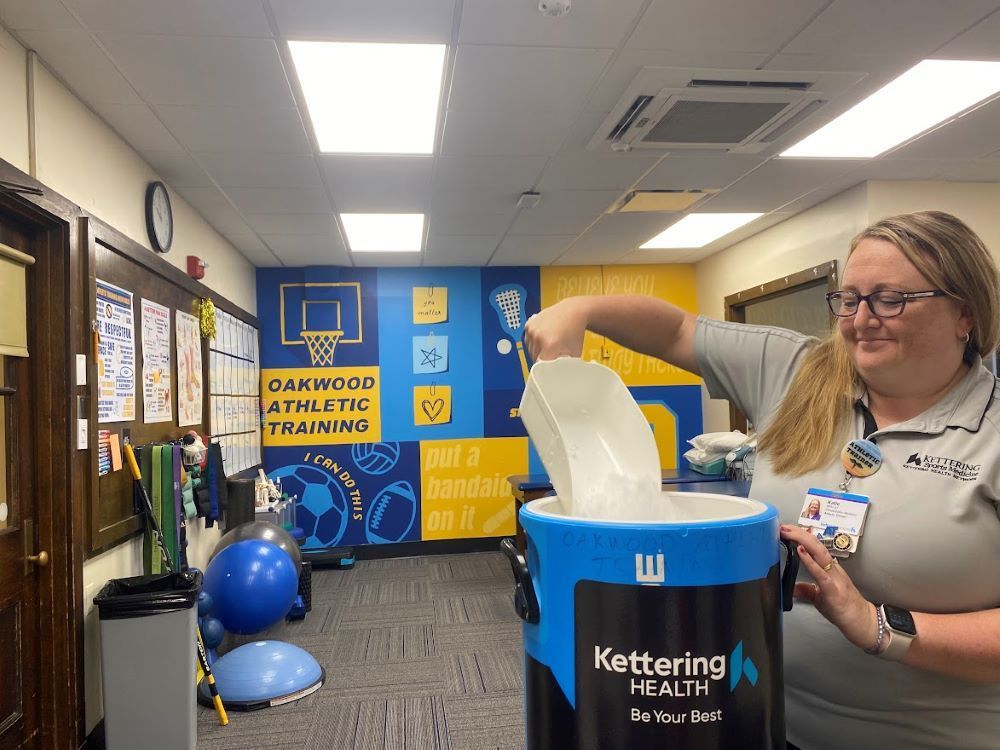Emergency and Trauma Care
Want to learn more about this at Kettering Health?
Summertime’s longer days and warmer temps invite us to get outside. But we often underestimate the risks of hurrying outside, whether it’s for football practice, a pick-up game, or to garden.
And they’re risks Katie LaRue-Martin, athletic trainer (AT) with Kettering Health, knows can become dangerous—for even the most physically fit. After 13 years as an AT, and seven as a team lead, she knows what the body needs to stay safe in the summer heat.
Staying ahead of heat-related illness
During summertime especially, Katie and her team ensure student-athletes, parents, and communities know how to avoid and respond to dehydration, heat exhaustion, and heat stroke.
“Prevention is key,” Katie says. “We want to make sure everyone is educated on symptoms of different heat-related illnesses.”
And this starts well before you go outside. Prevention, Katie offers, includes a good night’s sleep, eating breakfast and balanced meals, and (if possible) planning to do strenuous activity in the morning or evening. For athletes, the greatest risk of heat-related illness is during the first two to three weeks of practice.
Katie also highlights hydration. “Drink water throughout the day,” Katie says. “You need to replace any fluids you lose.” This includes keeping water nearby during any outdoor activity. “Don’t count on running inside every few minutes.” It doesn’t take long for dehydration to show up, which increases your risk of heat exhaustion.
Responding to heat exhaustion or stroke
“Signs of heat exhaustion are fatigue, dizziness, along with vomiting and nausea,” says Katie. Along with athletes, the elderly and those with heart disease or diabetes have an increased risk. If someone shows signs, “Move them to a cool or shaded area. Use ice towels or fans, and remove extra equipment or clothing to expose more skin to the air.”
Katie recommends returning to outdoor activities, practices included, gradually over the following day or two. If not cared for, heat exhaustion can lead to heat stroke, which poses even greater dangers.
During heat stroke, “Your core temperature gets around 104 to 105 degrees,” says Katie. And the human body can’t function for long at that temperature. Symptoms include “disorientation, aggression, and loss of consciousness.”
Be sure to call 911 and help them into a cool or ice bath. It’s important to bring their core temperature closer to 102, which is the temperature ATs must bring student-athletes’ bodies to before they can go with EMS.










